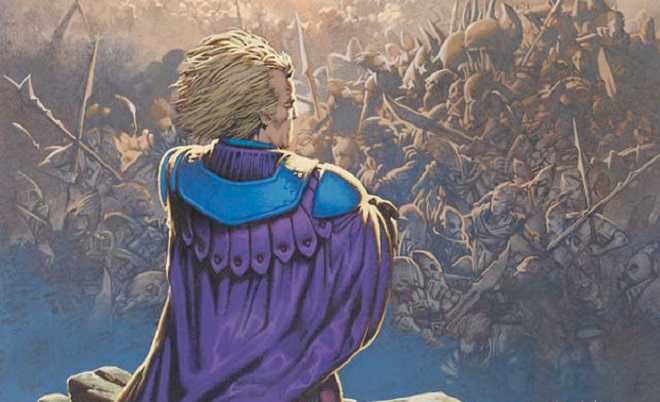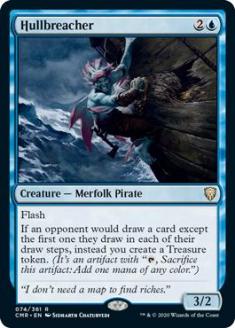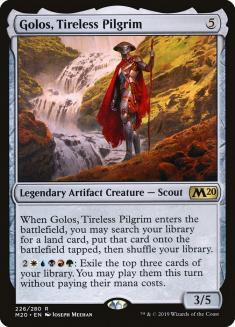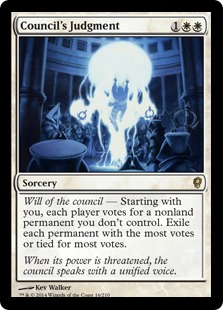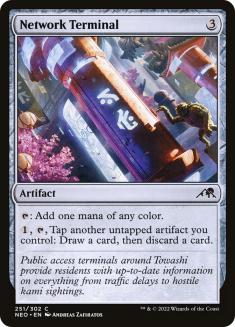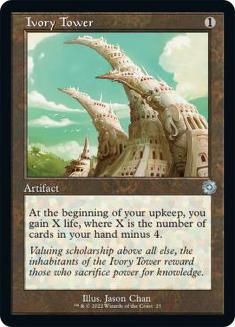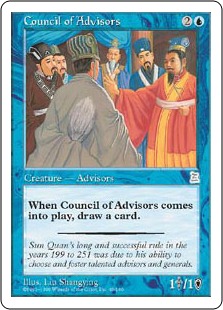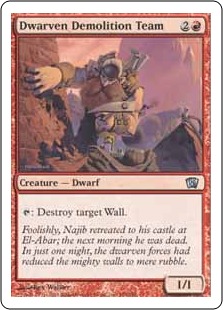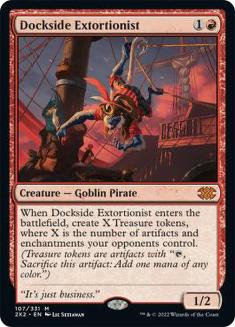Every time a quarterly update has no changes to the Commander Banned List, there’s a fraction of the population who will inevitably say, “The Rules Committee does nothing!”
This happens mostly because they’re used to other formats (especially non-Eternal ones) being more dynamic, living on a less stable foundation. Their banned lists change more frequently as players aggressively adapt to new circumstances, with tournament results being an important factor. Eternal formats move a little more slowly, as the weight of card numbers make them more difficult to shift.
Add on top of that how there is no significant tournament play (and even if there were, that’s not what we’re in the business of), and there’s really no global Commander metagame to adapt to. Sure, there are trends, and there are things that threaten the social experience we’re trying to cultivate, but in the end, managing Commander is a very different animal.
I’d like to offer you some insight on what goes into what the Rules Committee (RC) does. And I’m here to tell you that doing nothing takes a lot of work.
The Ban’s (Not) the Thing
First, it’s important to stress that managing the Banned List is only a part of what we do. It’s a much smaller percentage of what we do than it is for the managers of other formats. Once again, and I’m probably going to say this a few times, we intentionally do things differently. Commander is the only format with a philosophy. Commander is the only format with an expressed social conscience. It follows that we spend time to plan and take actions which fulfill those other goals as well.
With the addition of Olivia Gobert-Hicks and Jim LaPage to the RC, our internal dynamic will naturally change. What worked for the four of us—who have been working together for more than twenty years in some cases, and all doing this for fifteen plus—isn’t going to work for six. The two of them bring new mindsets and methods, which can only improve on how we do things. They’re not here to change the underlying philosophy; they’re here to help us better articulate and implement it. They both bring some strong organizational tools to the table. As we all settle into getting used to working with each other, we’ll come up with processes that make sense for the six of us.
Managing the Format Rules
I figure we’d start with the one that most folks know about. Managing the rules of the format includes the Banned List. While most folks probably consider dealing with the Banned List the most important thing we do in shaping the format, I think it’s something else—which we’ll get to in a bit. The Banned List is certainly the most visible thing we do.
The banning/unbanning process involves several steps. A card gets on our radar when we see a great deal of discourse about it. Over the last few years, that’s mostly been online, since that’s where the game has lived. In the past, and in the future now that we’re coming out to events again, it’s involved speaking to players personally. Once a card has generated enough discussion to attract our attention, we’ll start talking about it with the Commander Advisory Group (CAG)—although it may have been one of them that brought it up in the first place.
The basic idea is to have a rolling discussion via text over the course of the quarter, which we use a private Discord server for. Quarterly meeting time isn’t when we bring up new business; it’s when we decide on what we’ve been talking about for the last three months. The rolling discussion gives everyone (there are nearly twenty of us at this point between RC and CAG) an opportunity to contribute on their own schedules. Because it’s text, any of us can easily scroll back through to refresh ourselves on the material if need be. At a certain point, discussion will have been exhausted. We might ask the individual CAG Members how they’d vote on a card if they had one, but that’s not a requirement. It’s also usually clear which way they’d lean, based on what they’ve had to say the last few months.
After all the chat is over, the RC meets alone within a few weeks of the announcement date. This is the part where the particulars will change with the addition of Olivia and Jim. The voting process that worked for the four of us for so long might not work for six. Here’s the short version. Each of us would assign a value to our vote, from +2 (pass/uphold/don’t ban) to -2 (reject/remove/ban). If the threshold reached +3 or -3, depending on what we were doing, we’d make the appropriate change.
On a rotational basis, one us starts the write-up in a Google document. The others comment and suggest edits. Eventually, we come up with an announcement. Shortly before announcement day (now regularly on the Monday before the major set Prerelease), we inform the CAG of the decision(s), have them give us a final sanity check, and let them have a look at the announcement language to make sure there aren’t any land mines and that the tone is appropriate.
The process for rules changes and administrative stuff is pretty much the same. The only difference is in adding or removing someone to/from either the CAG or the RC. In that case, the vote is straight up and must be unanimous to carry (obviously if we’re removing someone, which fortunately we’ve never had cause to, they obviously wouldn’t get a vote).
Crafting and Implementing Philosophy
We have a Philosophy Document, which you can check out on the official website. The underlying philosophy of Commander remains the same, but the methods by which we articulate it can change. We want Commander to be or reflect those things that you see in bold type face in that document. Although we can respect that others play Commander in a fashion for which it wasn’t designed (specifically in a tournament setting), we’ll continue along the original philosophical path—that it’s something different from tournament Magic, focusing on the social aspect first, the mechanical one second.
Implementing philosophy is relatively passive. It’s something that we talk about at great length, but it infuses itself into the things we do. It’s difficult to point to something objectively and say, “That’s an implementation of philosophy.” The philosophy is simply a set or principles that we let guide our actions. One of the things that we can be better on, and one of the projects that Jim has picked up (since before he joined the RC, by the way), is to be able to draw straighter lines between philosophy and action, then results of that action. In short, finding a better path to articulate as objectively as possible why we’re doing things and how we know that we’ve done it right (or not).
Interacting with the Commander Advisory Group (CAG)
The lines of communication between the RC and the CAG are always open. We talk in the joint channel on the Discord server, and we talk individually. It’s not always about the pressing issues of the day. Sometimes it’s just a “what if?” question or thought exercise, sometimes it’s getting their take on Magic’s issue of the day, and sometimes it’s just to chat with friends. It’s about posing questions to them and having them return the favor. Interacting with the CAG is a significant way to keep our fingers on the pulse of the format.
When we ask a CAG member about something (and remember, we might pose a question to the whole group but aren’t looking for a group answer), we’re looking for them to filter it through their own particular lens. Any of us can read a poll as well as Shivam Bhatt can, for instance. What we need from him is to then use his expertise and Commander skill set to take the what of the poll or data and turn it into a so what that we can use.
The CAG has grown too large to meet with all of them at once. Twenty-person meetings are chaotic enough. Putting them online is even more so. We’ve laid the groundwork for a plan which involves separating CAG members into smaller working groups of three to four. Then, for each quarter, one or two RC members will meet with that working group to discuss whatever issues need to be worked on. Either side can suggest topics, and then the RC member(s) bring back the results to the others. Ideally, the makeup of the working group then changes each quarter so that folks don’t get into any ruts.
Engaging with the Community
One of the longtime criticisms of the RC was that we were distant figures that kept ourselves in some distance in an ivory tower. We didn’t see it that way, since we were regularly at big events and at least three of the four of us (at the time) were active at our LGS. Since the perception existed, however, we wanted to do something about it.
Forming the CAG was part of the answer, fostering more and better communication with a wider cross-section of the community. The idea with the CAG was to engender conversation in both directions. We wanted players to have better access to so that we could hear more of their thoughts, hopes, and desires, and we wanted to have even more of a conduit to letting people hear what we had to say.
We were active on the forums on our old website and a few others, but things really pushed into overdrive in the webcam and Discord server era. Going on other peoples’ streams allowed us to interact with more people in a single sitting. Getting our own Discord server then became the best way to embed ourselves deeply into the community.
The idea is for us to be accessible to anyone. I understand how previously folks might have thought that we were only involved with highly-placed people in the community, since we ran in some of those circles. Discord has become the great democratizer. You’ll find that at least one RC member is active during most hours, giving players direct access to us. Anyone can strike up a conversation with any of us. There are no walls or barriers.
One of the ideas we’ve talked about is having a weekly scheduled “RC Office Hours” and Office Hours channel. That way, instead of just trying to catch one of us whenever, you’ll know that during such-and-such time, at least one of the six of us will be there waiting to talk about whatever you want. It’ll keep the other spots from getting bogged down in stuff that might be off-topic in that particular channel.
This is the one that I personally spend most of my time on, and it’s because I have a luxury of time that the other RC members don’t quite have at the moment. I enjoy being available to the player base.
We also engage on social media, where we’re trying to us the Commander RC Twitter handle instead of doing things individually. Twitter isn’t the greatest spot for engagement, though, which is why we’ll always drive traffic back to the Discord server.
Working with Studio X
This is the one that I think is actually most important in shaping the format, as we have input directly into cards getting made. We get to see Commander products (and often the legendary creatures from main sets) during development. We tend to get our looks once early and once late. Sometimes the two are nothing like each other; sometimes designs power straight on through. Our feedback runs from “Yes, that’s an exciting idea, please do more of that!” all the way down to “Please don’t ever print that card.” They’ve actually listened to us on the latter more than once. It’s important to provide positive feedback as well as critical, because designers also like to know what works and not just what people are salty about.
Our feedback is broken into two sections. One, as I’ve mentioned, involves the individual cards. The other is the format-level concern. We take both what we’ve heard from the community and use our own experience to talk with them about the bigger picture. Providing a positive social experience for players is something we hope that Studio X will foster via the cards and mechanics they develop. When something threatens that positive experience for a broad section of the player base, then it becomes an issue we want to address. For example, the community is currently expressing an anxiety over the proliferation of Treasures. It’s not only about a particular Goblin Pirate, but the use of the mechanic in general. It’s then our job to lay our observations on top of that, such as if we too think there might be too many Treasures running around out there.
The reason I believe that this effort has a greater impact on the long term health of the format is that we get to help steer the direction earlier. The Banned List corrects mistakes. By being involved earlier and more often, we get to help keep some mistakes from ever happening. If we never banned a card again, I would not be sad about it.
There are a few other things that we spend time on, like working on special projects and some other administrative stuff, but the above categories capture the lion’s share of what we on the RC do. I was going to do a section called Attending Events until I realized that attending events is just a vehicle for doing some of the other things. I hope this brief (and hardly exhaustive) look into how we spend our time gives you better insight into the way we function and why.
Always remember we have a channel on the Commander RC Discord server dedicated to discussing my articles, so if you want to comment or ask questions about what I’ve covered today, come on by. Additionally, we have many channels dedicated to various Magic, Commander, and other topics. The format-philosophy channel is particularly lively. Join nearly 8,000 friends for discussion of not just this piece, but on a wide variety of topics—both Commander-related and not. Hope to see you there!
Visit my Decklist Database to see my Signature Decks, the Chromatic Project, and more!

